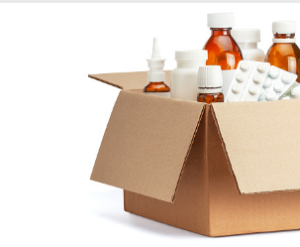Pharmpac NZ tablet bottle packaging is a standard oral medication method, particularly prescription ones. They’re more cost-effective than blister packs and have fewer chances of contamination.
They provide product details like the best before and expiration dates, making them essential tools in patient safety.
Bottles
 Bottles are an integral component of drug product packaging. They protect the contents from contamination and wear and tear, and they can also often be made out of durable plastic or strong glass for extra longevity.
Bottles are an integral component of drug product packaging. They protect the contents from contamination and wear and tear, and they can also often be made out of durable plastic or strong glass for extra longevity.
Pharmaceutical packaging requires a range of plastic bottles in various shapes, sizes and colours that can be used to package liquid or dry drugs.
These containers are eco-friendly, as the plastic materials used to manufacture them can be recycled and turned into new products. It makes them an excellent option for companies seeking to reduce their carbon footprint.
However, plastic can be permeable to gases and some liquids, which could contaminate or reduce the effectiveness of a drug. It is preventable by using a bottle made from non-water absorbing material.
Another type of bottle suitable for drug packaging is the blister pack. These containers are constructed from thermoformed plastic and typically feature a paper backing or foil seal.
Blister packs are a widely used type of tablet packaging and have become an industry standard. These bags protect from moisture and humidity, giving solid medicines a longer shelf life.
Tablet manufacturers looking to reduce their environmental impact should consider blister packs, as they use only a fraction of a bottle’s material. Indeed, if these formats were evaluated using the waste hierarchy system, blister packs would be ranked as the greener choice.
Blisters
Blisters are an efficient way to package small items like tablets or bottle caps. The product is placed between a plastic shell and a specially designed card, vacuum-formed around a mould for a snug fit. The card’s colour and design are customised according to what’s inside. Finally, heat and pressure activate an adhesive (heat seal coating) on both surfaces so they adhere securely together.
Blister packs offer several advantages, such as child safety, product quality and medication adherence. Furthermore, they’re a cost-effective way to safeguard your product until your customer opens it.
Blister packs are becoming increasingly common in the pharmaceutical industry. They provide numerous advantages to manufacturers, pharmacy staff and patients alike, and their use is increasing.
Pharmpac NZ tablet bottle packaging is especially beneficial for child safety regarding pharmaceutical products since children can easily open bottles or caps and get their hands on pills.
Blister packaging offers several advantages, such as product freshness and tamper-evident protection, at a lower price point than other forms of packaging. Additionally, this type of container may be appropriate for environmentally sensitive items since it helps preserve their quality until accessed by a consumer.
Strip packs
Strip pack packaging is an efficient option for unit dose packaging, providing protection from moisture, temperature changes, humidity, oxygen and light exposure—furthermore, strip packs aid in improving patient compliance by giving a visual indicator of dosage amount.
This package type is convenient and can easily be carried in your pocket or purse. Disposing of the pack after use helps save both space and money.
Blister packs are the go-to primary packaging system for pharmaceutical products such as tablets, capsules, suppositories and vials. These contain a semi-rigid blister or cavity sealed shut with heat-sealable backing material.
They offer a cost-effective solution to bottles and jars, taking up less space, being easier to store, and dispensing quickly. It makes them popular among pharmacists and healthcare professionals due to their convenience.
Strip packing machines are cost-effective and versatile devices that can pack various products, such as coated tablets, soft gelatin capsules and more. Built to meet current cGMP guidelines with stainless steel construction, they meet all current cGMP regulations.
Vibration feeder with a material level sensor to guarantee stability during the material feeding process. Some models come equipped with PLC and Human Machine Interface for efficient operation.
These machines feature an adjustable slitter that can cut or slit foil into various sizes. It saves time, making it more profitable for pharmaceutical companies.
This pack type is ideal for pharmaceuticals as it protects from moisture, humidity and temperature changes. Additionally, it may be suitable for sensitive products.
Another advantage of these packs is that they can be reused and resealed if necessary. With the capacity to absorb up to 40% moisture, these packets protect products from spoilage or mould growth. They’re suitable for dry food packaging as well as sterile pharmaceutical packs.
